Dermaplaning - Everything You Need to Know
Want to know what all the rage about dermaplaning is? Read on to find out how it’s done and what benefits it brings. We promise you’ll understand the hype.
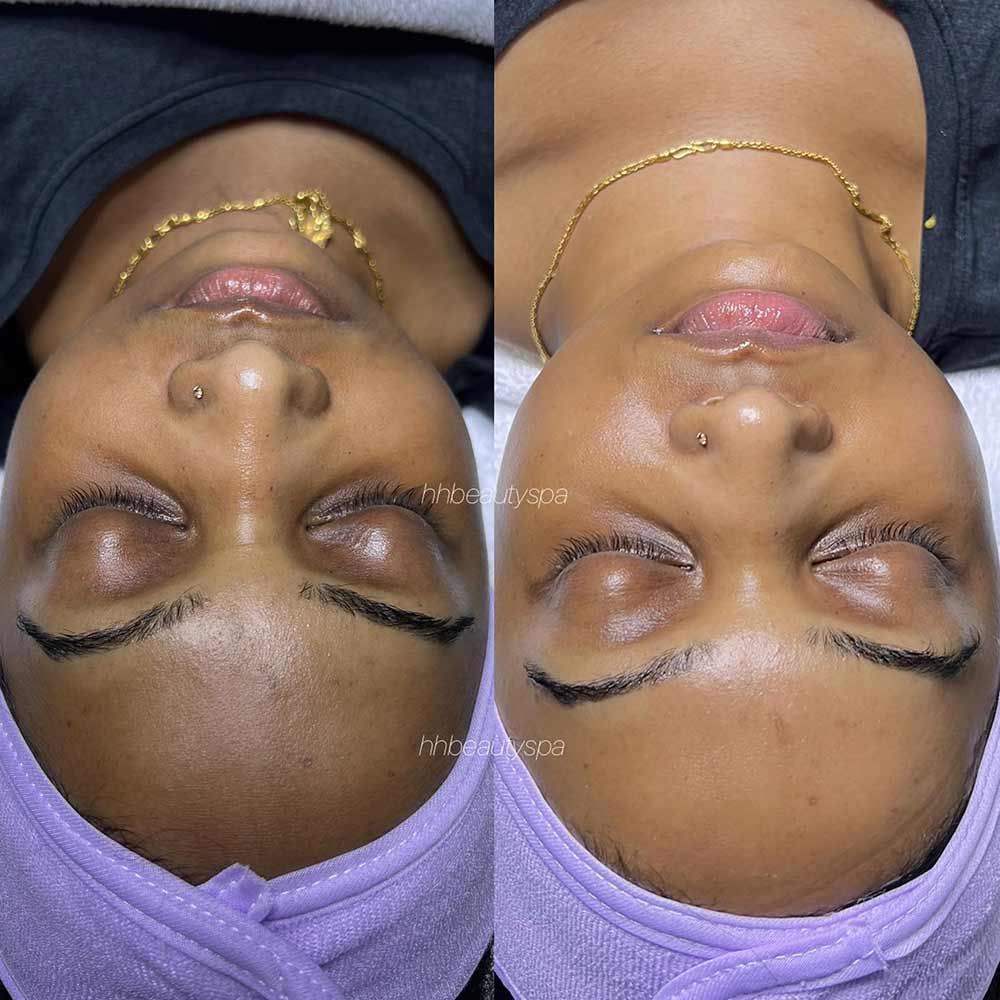
Image source : PMUhub
Explore more dermaplaning topics:
By now you must’ve seen dozens of random ASMR skincare videos of influencers gliding a blade over their face to produce that nice scraping sound. This technique is called dermaplaning and it’s an all-rounder!
Although it’s been around for decades, it actually boomed quite recently, with more and more people doing it to get that smooth and glowy complexion.
If you’ve been wondering what dermaplaning is and how it can be beneficial, read on to find out.
What Is Dermaplaning?
Dermaplaning is a cosmetic procedure used to remove anything your regular exfoliants can’t.
The treatment can remove up to 2 weeks of dead skin, peach fuzz and excess oils, giving your skin a very silky and smooth texture.
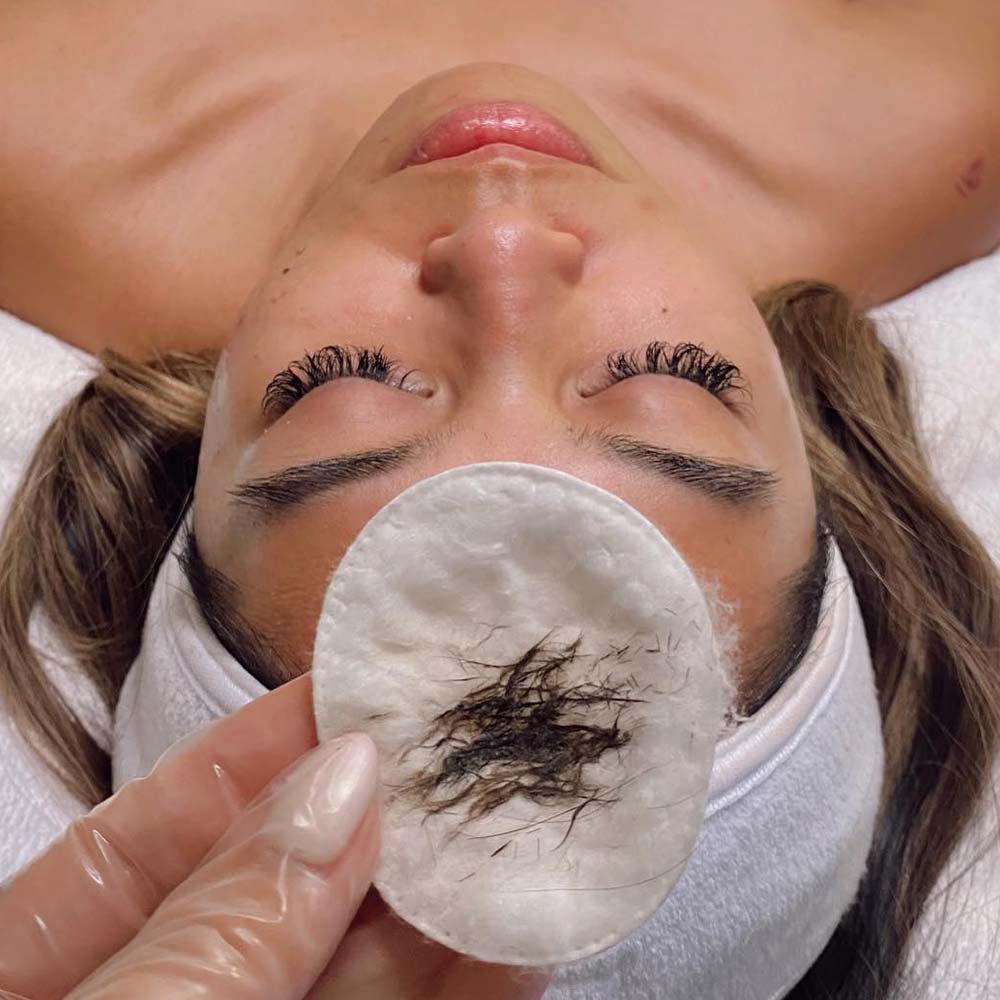
It’s done by gently scraping your face with a scalpel to remove the top layer of your skin, and leaving the surface renewed.
It may sound a bit scary at first, but dermaplaning is a totally non-invasive procedure, and as such it is a great alternative to harsher exfoliating treatments such as chemical peels.
Because of its non-invasive exfoliating effects, dermaplaning is often paired with a facial treatment. This is how the dermaplaning facial term came to be — it’s dermaplaning plus something else.
This procedure goes by many names: dermaplaning, dermaplane facial, dermablading, microplaning or just blading.
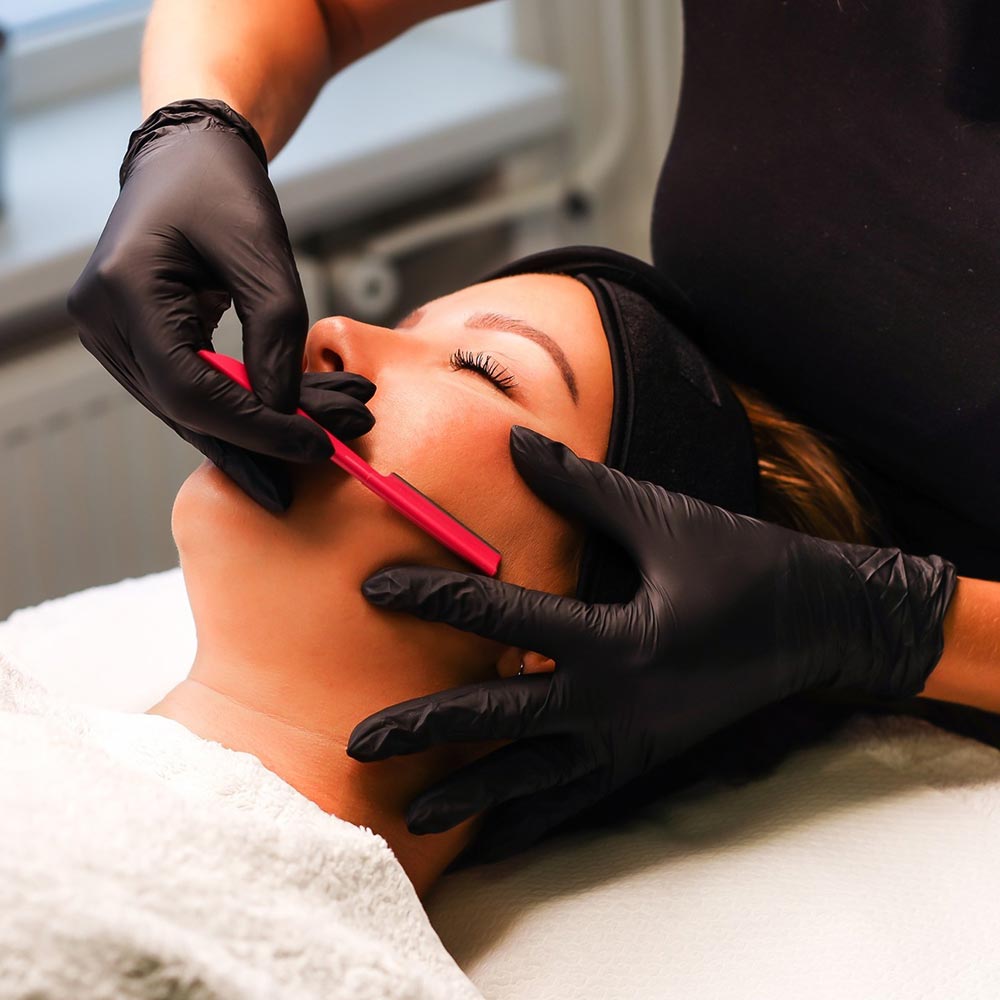
Is Dermaplaning the Same as Shaving Your Face?
Facial dermaplaning is very similar to shaving, as they both involve a blade going over your skin, but no, it’s not entirely the same.
Shaving your face will help remove peach fuzz off of your face and will make it smoother, but that’s about it.
Meanwhile, dermaplaning done by a professional with a very sharp scalpel helps remove the stratum corneum of the epidermis skin layer – and everything on it, hairs included.
Removing the hair has a lot to do with the overall success of further skincare steps. With peach fuzz removed, products can penetrate deeper into the skin.
Also, your makeup will glide on so much smoother and won’t have that cakey effect you get when it gets stuck in your hairs.
Dermaplaning is often used specifically for this purpose, while others are afraid of facial hair removal because of hair growth myths. But more on those later.
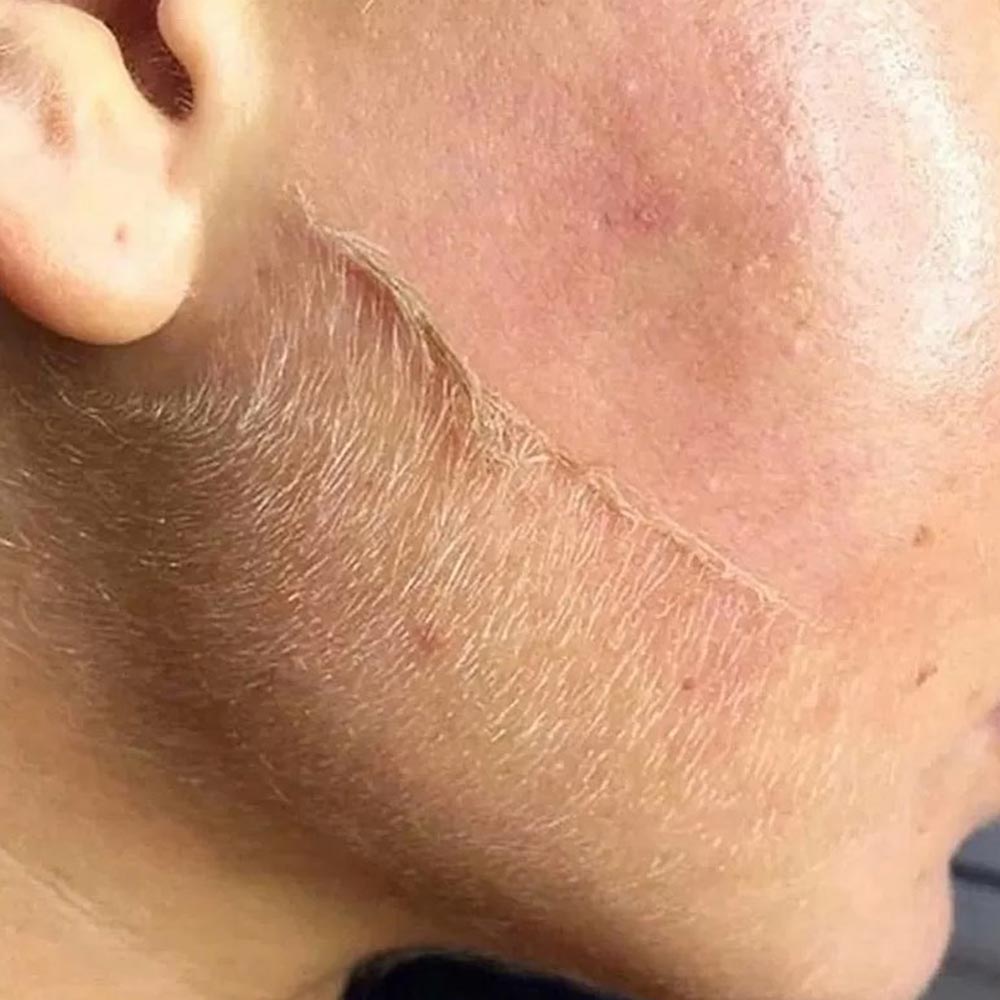
How Does Dermaplaning Work?
The dermaplane facial deep-cleans your skin and removes dead cells and other debris that make your skin appear more uneven, dull, and looking older than it actually is.
The treatment is done by placing a sterile surgical scalpel at a 45-degree angle against your skin and slowly dragging it across your face.
By eliminating the buildup that makes pores appear larger and texture rougher, your new skin immediately shows up fresher and brighter.
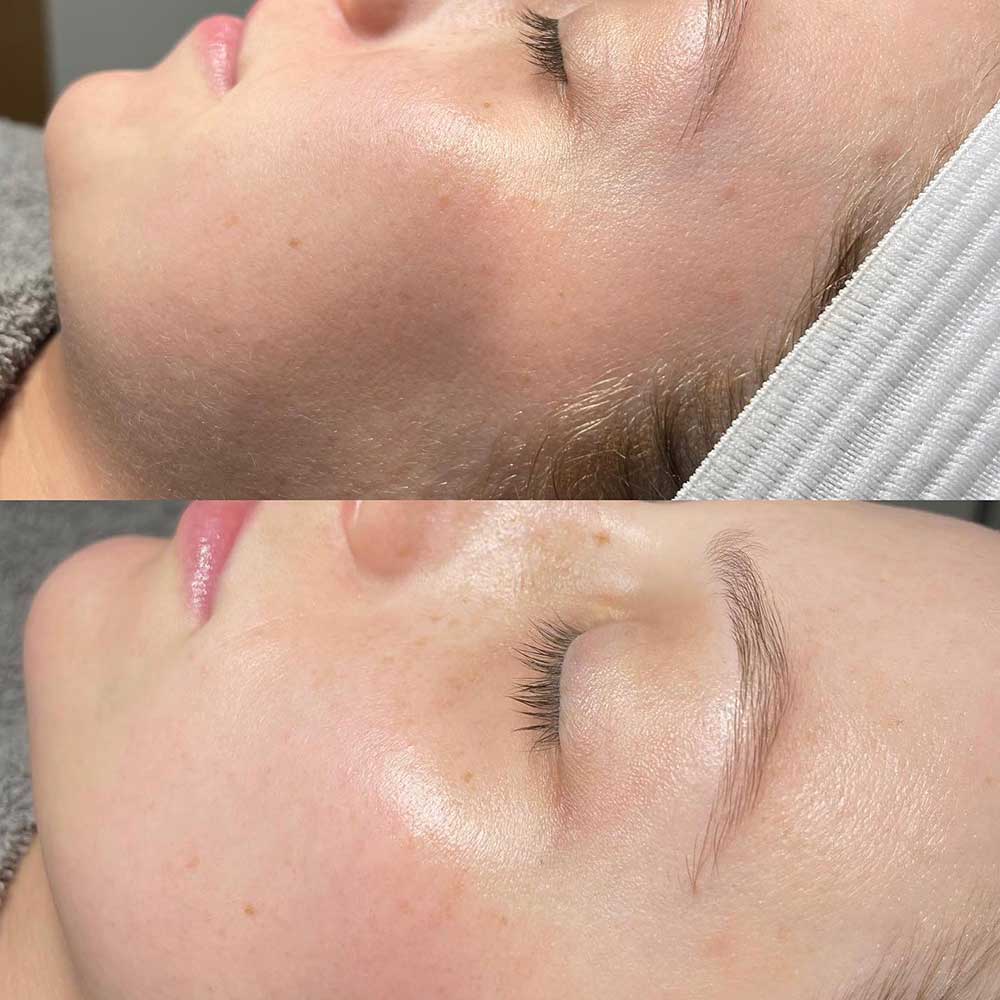
About the Procedure
The treatment begins by cleansing and toning your face to remove excess oils and dirt.
The technician will then start scraping your skin either manually with a scalpel or with an electronic dermaplaning tool. The tool is similar to an electric razor and is called a dermatome.
During the procedure, you may feel tingling or scratching sensations. You shouldn’t feel any pain. But sometimes, the tech might use a numbing solution in the form of cream or spray.
The last step of the process is bringing moisture back into the skin. At this stage, your skin’s pores can soak up more product, which is why serums and moisturizers are generously applied in this step.
Not only does this boost moisture and help enhance the appearance, but it also prevents skin from feeling itchy and irritated.
At the very end of the treatment, sunscreen will be applied to protect your newly exposed skin from harmful UV rays.
Is Dermaplaning Safe?
Dermaplaning is safe when performed by a licensed and trained technician.
There are little to no side effects of this procedure and the limitations for who can do this treatment are minimal.
What Are the Risks of Facial Dermaplaning?
This is a very low-risk procedure. Still, if done improperly, the dermaplaning facial can jeopardize the skin’s integrity.
That’s rarely the case, but it’s exactly why you should get a professional treatment.
Potential risks are:
- Breakouts
- Infection
- Persistent redness
- Discoloration
- Prolonged irritation
- Scarring
- Cuts and bleeding
- Swelling
If you notice any of these symptoms, contact your dermatologist.
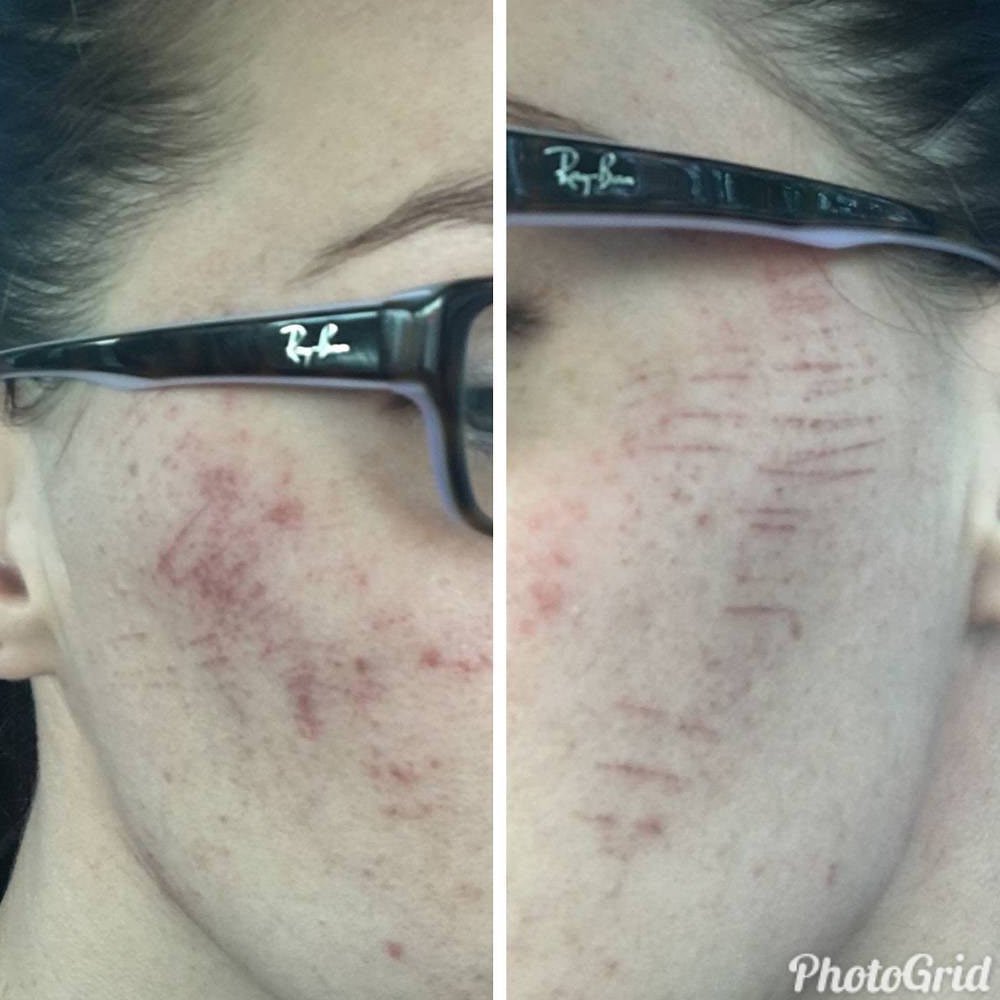
OUR EDITOR-IN-CHIEF EMILY’S FIRST-HAND EXPERIENCE
I’ve been DIY dermaplaning my face every 4 weeks or so for the past year. I use an eyebrow razor, which I know is not the best option and I don’t advise it. Here’s why:
Unless I’m really, really careful with the angle and the pressure, micro-cuts happen very easily. I’ve cut myself on several occasions, and I’ll share what that looks like:
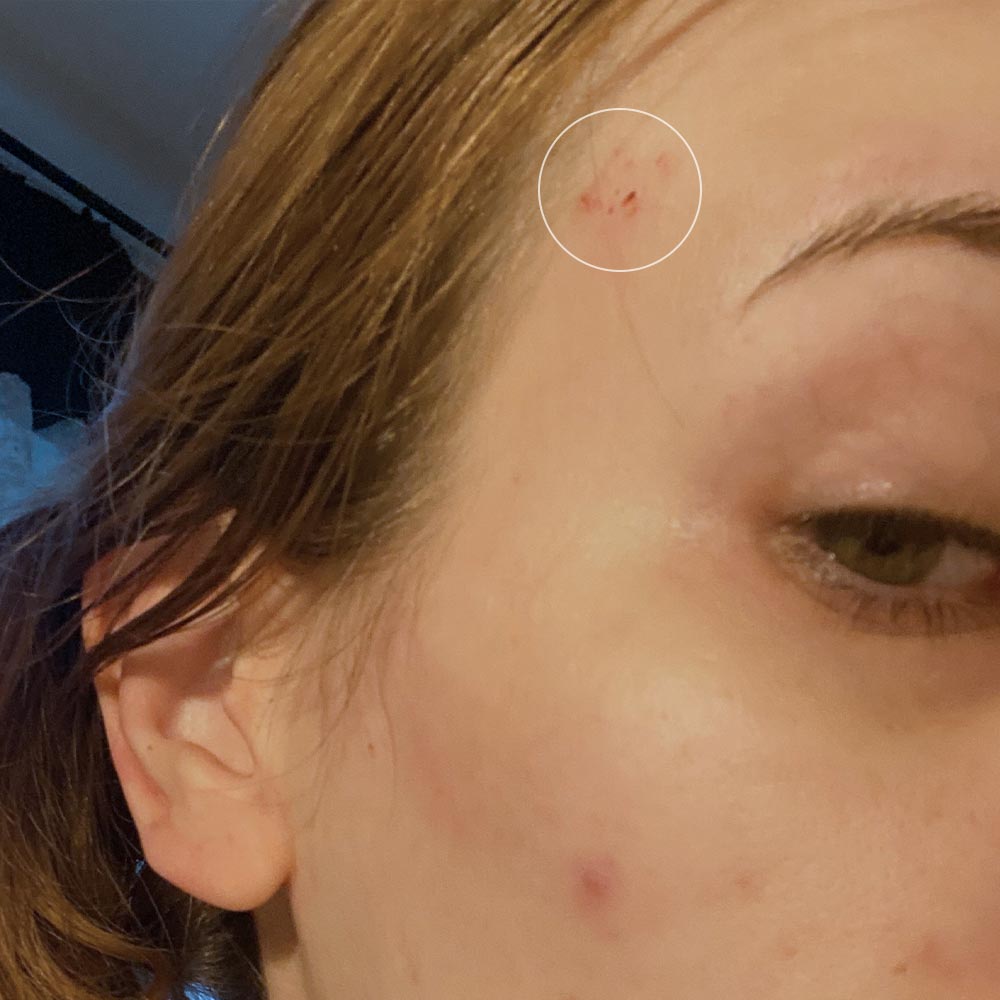
The cuts were minor and they healed in like a day or 2, but I had to avoid getting makeup in the area and the scabs were not attractive at all.
So word of warning – doing dermaplaning at home may be much quicker and more convenient than getting a professional treatment, but it definitely has its risks.
I don’t recommend you DIY it, but if you do, go slow, be gentle, make sure your tool is sterile and sharp, and your hand is steady.
Extra note – as you can see, I had an acne breakout on my cheek at the time, so I made sure to avoid the area at that particular session.
What Are the Benefits of Dermaplaning?
The dermaplane facial is usually done to improve the appearance of the skin.
It’s used to help with dull skin and get rid of dead skin buildup. It removes dry patches so it’s great for people with dry skin type, especially because it helps products penetrate deeper, allowing the skin to absorb moisturizer better.
It can fix a number of issues like:
- Fine lines
- Dull skin
- Light, shallow acne scars
- Enlarged pores
- Sun damage spots
- Hyperpigmentation
- Dull skin
- Dry patches
Who Can Benefit from Dermaplaning?
The answer is — pretty much everyone.
Most exfoliating treatments, such as chemical peels and microdermabrasion, have contraindications. Dermaplaning, on the other hand, doesn’t use any harmful chemicals and it’s great for all skin types.
It removes excess sebum from the face, which is a great choice if you have an oily skin type.
On the opposite end, it’s also perfect if you have dry skin, as the blade removes dry patches and boosts moisturizers by allowing them to sink deeper into the skin.
Additionally, this treatment can also be a perfect fit you have:
- Mature skin
- Textured skin
- Uneven complexion
- Shallow acne scars
- Fine lines
- Superficial hyperpigmentation

Who Should Avoid Dermaplaning?
Dermaplaning is a great treatment because of how quick, simple and pretty much all-inclusive it is. However, there are some limitations.
Dermaplaning can’t work wonders if you have deeply rooted wrinkles and scars, inflammatory skin conditions like psoriasis, eczema, rosacea , active acne, or sagging skin.
This treatment is superficial, so if your skin conditions are embedded deep into the skin, you’d need more aggressive treatments like chemical peels or microdermabrasion.
Plus, your skin needs to be healthy and uninjured to avoid the risk of infection. So, if you have an inflammatory skin condition, the dermaplaning treatment is definitely not for you.
Another condition facial dermaplaning can’t treat is active acne. If you have these, the blade scraping your face will just spread the bacteria further and make you break out even more.
As for the loose skin, this is not actually an issue for the dermaplaning facial, but general loss of elasticity is better treated with microneedling.
Addressing Common Questions and Concerns about Dermaplaning
Before you take a beauty scalpel into your hands, make sure to find out the answers to all your questions about dermaplaning. That way, you’ll be 100% ready for this facial.
#1: How Do I Prepare for Dermaplaning?
This treatment doesn’t really require any special preparation.
However, it’s recommended that days leading up to the treatment you avoid waxing or tweezing, bleaching, and using harsh anti-aging and anti-acne exfoliants and skincare.
In other words, you should definitely snooze on your routine with retinols and retinoids, glycolic and salicylic acid, and similar active ingredients.
It’s also recommended to stay out of the sun as it makes your skin more sensitive and reactive.
#2: How Often Can I Dermaplane?
Dermaplaning facials don’t have to be done continuously.
They can be done regularly, if you are trying to actively maintain radiant skin. But they can also be done as a one time thing, for a special occasion or just to try this treatment out.
Since this treatment exfoliates deeper than regular exfoliants, it shouldn’t be done more than once a month.
The general recommendation is to wait at least 30 days between sessions, but this can vary based on your skin type.
It’s important to wait long enough until your skin completes its renewal cycle. Since this is an exfoliating treatment you need to wait for dead skin to accumulate again.
Consult your dermatologist on the frequency of the treatments that would work for you.
NOTE
If you are using dermaplaning primarily for hair removal, and you need to remove it more than once a month, maybe you should look into another hair removal solution as over-exfoliating your skin can damage it in the long run.
#3: How Long Does the Dermaplaning Treatment Take?
The actual dermaplaning is a quick procedure and it typically takes about 15 to 30 minutes.
The whole session – including consultation, preparation, and explaining the aftercare instructions as well as the treatment itself – is under an hour.
#4: Does Dermaplaning Cause Acne?
Not if it’s done on clear skin.
Dermaplaning shouldn’t be done on skin that has an active breakout because the bacteria from the pimples get spread across the face, which can cause new ones to pop up.
But this shouldn’t happen if you have no breakout to begin with. The focus is on removing the excess skin oils and dead skin building, which actually helps prevent future breakouts.
However, if you do experience a breakout it will be because of improper aftercare, not the procedure itself. You need to refrain from touching your skin – no matter how soft it is.
Touching it with dirty hands allows bacteria to get into the pores, re-congest them and break you out.
#5: Does Dermaplaning Hurt?
Since this procedure only requires scraping the surface of your skin, there is no pain associated with the procedure.
To be fair, saying a very sharp blade will be scraping your face does sound a bit scary, but this treatment isn’t nearly as intense as it sounds.
If you go for a professional treatment, it’s a completely safe and effective way to exfoliate your skin and remove unwanted peach fuzz in the process.
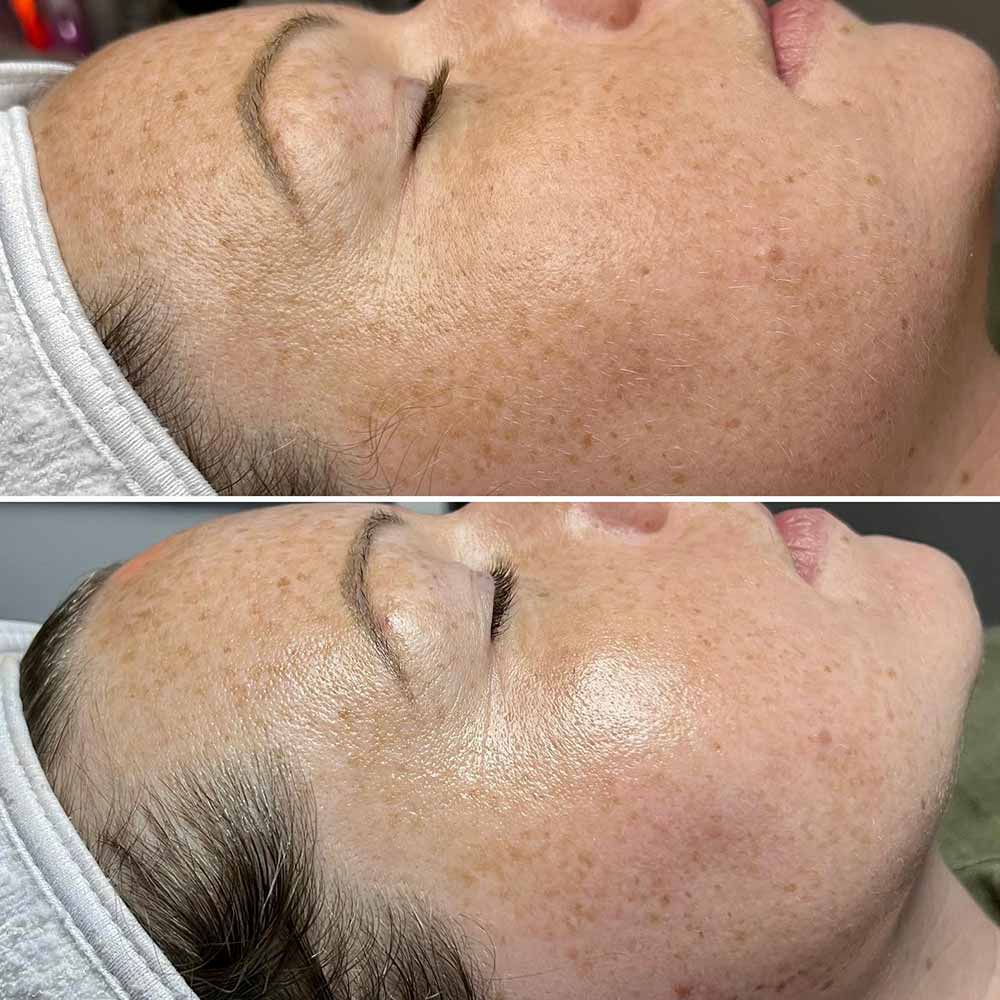
Aftercare Tips
Since this is a non-invasive treatment, there really aren’t any strict aftercare rules you need to follow. But there are some things you can do to help your skin recover and achieve maximum results.
Exfoliating the layer of dead skin strips your skin of its natural oils and protective barrier. You’ll need to restore the moisture and rehydrate the skin after dermaplaning.
Until your skin barrier is restored your skin can appear red and tender. Be cautious about which products you are using in the days following the treatment. Retinol and exfoliating acids should be avoided. Use a gentle cleanser.
You should avoid using makeup for about a day or two. Makeup isn’t absolutely forbidden, but your skin is very absorbent and reactive, so best not expose it to unnecessary products that can clog your freshly cleaned out pores.
Part of the aftercare is also staying out of the sun as much as possible for the next couple of days. After a dermaplaning facial, your skin is more photosensitive, so make sure you are applying sunscreen to protect it.
Recovery Time
You don’t need to plan for any recovery downtime.
Right after the procedure, your skin may be slightly red and tender. But that reaction, if it even occurs, goes away quickly.
Healing Process
Most clients resume their normal activities right after the procedure.
Skin will heal within a day or two, and if you get any blotchiness or slight stinging that will also resolve itself within 24 hours.
However, the skin’s sensitivity is increased so you need to pay attention to giving it a bit more care than usual.
How Much Does Dermaplaning Cost?
This treatment can cost between $75 to $150 per treatment, but the average cost of a dermaplaning treatment is $125.
The price of course varies depending on the experience of the technician, the location of the salon, etc.
Dermaplaning at Home
Many people do dermaplaning by themselves. However, this is more similar to facial shaving rather than dermaplaning. Real dermaplaning is done by using a very sharp scalpel that scrapes the skin surface.
These tools are used by professionals that know exactly how to do it without damaging the skin. Trying it yourself is not recommended as you can cut yourself and scar your face – as you could see from our editor’s experience above.
The tools for home use do achieve similar results, however, they don’t exfoliate as much. Mostly, they just remove the peach fuzz and some dead skin cells.
Although not as effective as a professional treatment, at-home dermaplaning does have its benefits, primarily the budget-friendliness.
What Dermaplaning Tools to Use?
If you decide to DIY it, just remember – clean your skin, be gentle, and don’t go over the same area more than once or you risk irritation.
Use light pressure and don’t forget to be very careful where the skin is thin like around your nose.
You’ll need a special tool – don’t try to use any old razor you have on hand.
What Oils to Use for Dermaplaning at Home?
The best oils for dermaplaning at home include naturally derived, lightweight, and non-comedogenic oils, such as jojoba, sweet almond, sunflower, or grape seed oil.
Also, it’s important for dermaplaning oils to have nourishing and hydrating properties, so they can bring back moisture, support your skin barrier, and keep your skin protected.
Dermaplaning – Main Takeaways
The dermaplaning treatment offers many benefits, especially if you take into account that it’s basically without risks.
It’s unique in the sense it’s pretty much for everybody and offers immediate results. Plus it’s really satisfying!
So why not give it a go?
weekly insight into PMU insdustry
Subscribe to our FREE newsletter. 100% good stuff.

support us so we can keep providing you with free education , information and inspiration.
